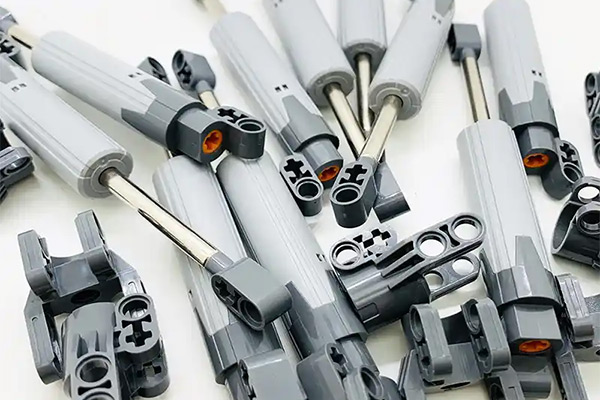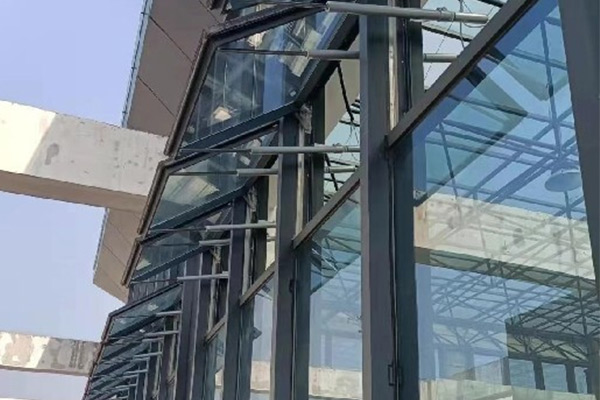Unlocking High Efficiency: The Core Role of High-Thrust Electric Linear Actuators in Modern Industry
As modern industry rapidly advances towards automation, intelligence, and sustainable development, high-thrust electric linear actuators are playing an increasingly central role. They aren't just simple drive components; they're key technologies that unlock high efficiency, boost productivity, and optimize operational costs. This article will delve into the core role of high-thrust electric linear actuators in the current industrial landscape and how they're driving unprecedented breakthroughs across various sectors.
Beyond Tradition: The Inherent Advantages of Electric Actuators
For a long time, hydraulic and pneumatic systems dominated the field of heavy-duty linear motion due to their powerful thrust output. However, as industrial demands for energy efficiency, precision, and environmental friendliness grew, the limitations of these traditional solutions became increasingly apparent. Issues like hydraulic fluid leaks, high energy consumption, complex maintenance in hydraulic systems, and insufficient precision and rigidity in pneumatic systems prompted the industry to seek more optimized solutions.
High-thrust electric linear actuators emerged as a response, quickly becoming an ideal alternative to traditional methods, thanks to their inherent advantages:
● Exceptional Energy Efficiency: Unlike hydraulic systems with continuously running pumps, electric actuators only consume power when motion is required, and their energy conversion efficiency is remarkably high. This significantly reduces energy consumption and operating costs.
● Unparalleled Precision and Control: Combining high-precision encoders with advanced servo control technology, electric actuators can achieve micron-level positioning accuracy and repeatability, along with precise control over speed, acceleration, and thrust. This is a level of performance that traditional hydraulic and pneumatic systems struggle to match.
● Clean and Environmentally Friendly: With no need for hydraulic fluid or compressed air, electric actuators completely eliminate issues like leakage pollution, noise, and exhaust emissions. This significantly improves the working environment and complies with increasingly stringent environmental regulations.
● Simplified Maintenance: Utilizing dry mechanical transmission, electric actuators require far less maintenance than hydraulic systems, reducing downtime and lowering both maintenance costs and complexity.
Core Role: Empowering the Six Pillars of Modern Industry
High-thrust electric linear actuators are more than just functional components; they've become indispensable to modern industry by empowering the following six key areas:
1. Enhancing Automation and Production Efficiency
In automated production lines, high-thrust electric linear actuators handle critical motion control tasks. They can quickly and precisely perform heavy-duty operations like material handling, mold adjustment, workpiece clamping, and pressing. Their programmability and high repeatability ensure smooth and efficient production processes, significantly shortening production cycles and boosting overall productivity.
2. Enabling Precision Manufacturing and Quality Improvement
For industries demanding extreme precision, such as aerospace, automotive manufacturing, and electronics production, the micron-level positioning capability of electric actuators is vital. They enable complex precision assembly, calibration, and testing tasks, ensuring products meet the highest quality standards, reducing defect rates, and enhancing the market competitiveness of the final product.
3. Driving the Green Transformation of Industrial Equipment
With increasing global focus on carbon emissions and sustainable development, "decarbonization" in the industrial sector is imperative. High-thrust electric linear actuators, with their superior energy efficiency and zero-pollution characteristics, are an ideal alternative to energy-intensive and polluting hydraulic systems. They help companies achieve green production goals, reduce their environmental footprint, and enhance corporate social responsibility.
4. Optimizing Operational Costs and Maintenance Convenience
The low energy consumption of electric actuators directly translates into electricity cost savings. Furthermore, because there's no need for regular hydraulic fluid or filter changes, and their mechanical structure is simple and reliable, their maintenance workload and costs are significantly reduced. Longer service life and fewer unplanned downtimes further optimize a company's total cost of ownership (TCO).
5. Boosting Equipment Adaptability and Flexibility
Modern industry requires adaptability to rapidly changing market demands. Electric actuators can easily adjust motion parameters through software programming, enabling multi-function switching and flexible production. This high degree of adaptability and flexibility allows equipment to quickly respond to production schedule changes, enhancing a company's market competitiveness.
6. Facilitating Human-Machine Collaboration and Safe Production
Their quiet operation and precise, controllable nature allow electric actuators to integrate better into human-machine collaborative environments. In some applications, their inherent safety (e.g., no risk of high-pressure fluid leaks) also improves workplace safety, safeguarding operator health.
Looking Ahead: Unlocking More Possibilities
The core role of high-thrust electric linear actuators continues to expand. With the integration of artificial intelligence, the Internet of Things, and big data technologies, future electric actuators will become even more intelligent and adaptive. They'll be able to self-diagnose, perform predictive maintenance, and even optimize their own operating parameters through learning, further enhancing efficiency and reliability.
From welding robots on automotive assembly lines to motion modules in precision medical devices, from load simulation on aerospace test benches to blade adjustments in large wind turbines, high-thrust electric linear actuators are, with their powerful yet precise motion, unlocking infinite possibilities in modern industry. They are not just a symbol of technological upgrade but a core driving force towards an efficient, intelligent, and sustainable future for industry.
-

Unlocking High Efficiency: The Core Role of High-Thrust Electric Linear Actuators in Modern Industry
-

Unlocking High Efficiency: The Core Role of High-Thrust Electric Linear Actuators in Modern Industry
-

Unlocking High Efficiency: The Core Role of High-Thrust Electric Linear Actuators in Modern Industry
-

Unlocking High Efficiency: The Core Role of High-Thrust Electric Linear Actuators in Modern Industry

